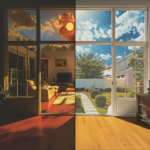
The amount of darkness or reflectiveness allowed for automotive window tint varies from state to state, but many people have heard that there are certain exemptions made that allow people to increase the darkness of their window tint. But what exemptions exist, and who is eligible to receive them?
There is only a medical exemption
The only exemption allowed in Massachusetts, according to the online government site, is for medical purposes. The website states that an individual who wishes to increase the darkness of their window’s tint above the legal limit must apply for and be approved for something called a “tinted glass waiver.”
What is a tinted glass waiver?
A tinted glass waiver needs to be kept in a person’s vehicle, and it allows for them to not get a ticket for window tint that is above the legal limits. This waiver is issued by the RMV. It allows for additional tint on the front side, rear side, and rear windows. This waiver does not allow for a front window to be tinted below the “AS-1” line. This translates to mean that a front window may not be tinted below the top six inches, for safety purposes.
Who is eligible for a tinted glass waiver?
To be eligible for a tinted glass waiver, the vehicle must be a private passenger vehicle and not a commercial or business vehicle. The person who owns and operates the vehicle must be diagnosed with a medical condition that causes them to suffer from photophobia or photosensitivity. To prove this, the person must have a certificate signed by a licensed physician which proves they have a qualifying condition.
What medical conditions may cause a person to suffer from photophobia?
Photophobia is a medical condition in which a person is considered to have “light sensitivity” or an intolerance to any form of light. Viewing harsh lights can cause major discomfort for those with photophobia.
Many causes are temporary and will not allow a person to receive a tinted glass waiver. Some causes are more permanent or longer lasting, however, and might be eligible for a waiver. This could include a corneal abrasion, uveitis, detached retina, or keratitis.
What medical conditions may cause a person to suffer from photosensitivity?
Photosensitivity can be much more serious than photophobia, because it is not just a sensitivity to light but an extreme sensitivity to sunlight and other light sources. When these people come into contact with these light sources (especially direct sunlight) they can break out in severe skin rashes and burns that would not be normal for the general population. These people are also more at risk for skin cancer and other serious skin issues.
Sometimes this can be temporary, also, as is the case when someone takes a certain type of medication – most commonly, an antibiotic. But it can also be caused by other serious illnesses or disease. This might include Polymorphous Light Eruption (PLE), Lupus, Actinic Pruiso, Bloom Syndrome, Darier’s Disease, and Pellagra.






Comments are closed.